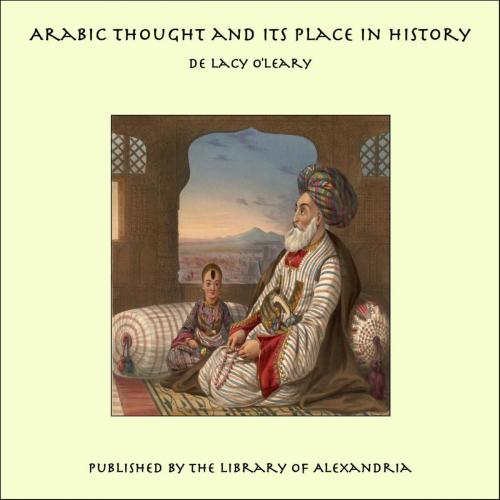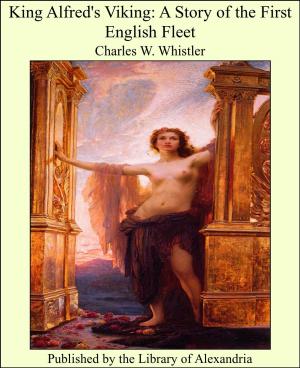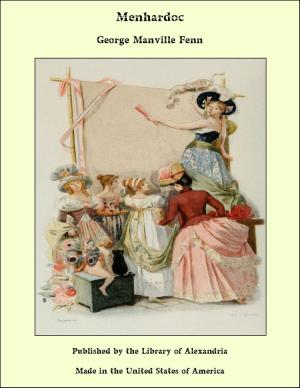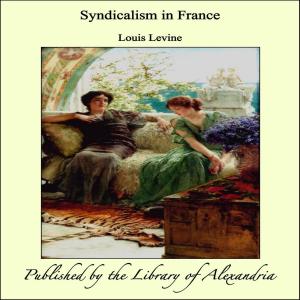Arabic Thought and Its Place in History
Nonfiction, Religion & Spirituality, New Age, History, Fiction & Literature| Author: | De Lacy O'Leary | ISBN: | 9781465554017 |
| Publisher: | Library of Alexandria | Publication: | March 8, 2015 |
| Imprint: | Language: | English |
| Author: | De Lacy O'Leary |
| ISBN: | 9781465554017 |
| Publisher: | Library of Alexandria |
| Publication: | March 8, 2015 |
| Imprint: | |
| Language: | English |
History traces the evolution of the social structure in which the community exists to-day. There are three chief factors at work in this evolution; racial descent, culture drift, and transmission of language: the first of these physiological and not necessarily connected with the other two, whilst those two are not always associated with each other. In the evolution of the social structure the factor of first importance is the transmission of culture, which is not a matter of heredity but due to contact, for culture is learned and reproduced by imitation and not inherited. Culture must be taken in the widest sense to include political, social, and legal institutions, the arts and crafts, religion, and the various forms of intellectual life which show their presence in literature, philosophy, and otherwise, all more or less connected, and all having the common characteristic that they cannot be passed on by physical descent but must be learned in after life. But race, culture, and language resemble one another in so far as it is true that all are multiplex and perpetually interwoven, so that in each the lines of transmission seem rather like a tangled skein than an ordered pattern; results proceed from a conflicting group of causes amongst which it is often difficult to apportion the relative influences. The culture of modern Europe derives from that of the Roman Empire, itself the multiple resultant of many forces, amongst which the intellectual life of Hellenism was most effective, but worked into a coherent system by the wonderful power of organization, which was one of the most salient characteristics of that Empire. The whole cultural life of mediæval Europe shows this Hellenistic-Roman culture passed on, developed, and modified by circumstances. As the Empire fell to pieces the body of culture became subject to varying conditions in different localities, of which the divergence between the Greek-speaking East and the Latin-speaking West is the most striking example. The introduction of Muslim influence through Spain is the one instance in which we seem to get an alien culture entering into this Roman tradition and exercising a disturbing influence. In fact, this Muslim culture was at bottom essentially a part of the Hellenistic-Roman material, even the theology of Islam being formulated and developed from Hellenistic sources, but Islam had so long lived apart from Christendom and its development had taken place in surroundings so different that it seems a strange and alien thing. Its greatest power lay in the fact that it presented the old material in an entirely fresh form.
History traces the evolution of the social structure in which the community exists to-day. There are three chief factors at work in this evolution; racial descent, culture drift, and transmission of language: the first of these physiological and not necessarily connected with the other two, whilst those two are not always associated with each other. In the evolution of the social structure the factor of first importance is the transmission of culture, which is not a matter of heredity but due to contact, for culture is learned and reproduced by imitation and not inherited. Culture must be taken in the widest sense to include political, social, and legal institutions, the arts and crafts, religion, and the various forms of intellectual life which show their presence in literature, philosophy, and otherwise, all more or less connected, and all having the common characteristic that they cannot be passed on by physical descent but must be learned in after life. But race, culture, and language resemble one another in so far as it is true that all are multiplex and perpetually interwoven, so that in each the lines of transmission seem rather like a tangled skein than an ordered pattern; results proceed from a conflicting group of causes amongst which it is often difficult to apportion the relative influences. The culture of modern Europe derives from that of the Roman Empire, itself the multiple resultant of many forces, amongst which the intellectual life of Hellenism was most effective, but worked into a coherent system by the wonderful power of organization, which was one of the most salient characteristics of that Empire. The whole cultural life of mediæval Europe shows this Hellenistic-Roman culture passed on, developed, and modified by circumstances. As the Empire fell to pieces the body of culture became subject to varying conditions in different localities, of which the divergence between the Greek-speaking East and the Latin-speaking West is the most striking example. The introduction of Muslim influence through Spain is the one instance in which we seem to get an alien culture entering into this Roman tradition and exercising a disturbing influence. In fact, this Muslim culture was at bottom essentially a part of the Hellenistic-Roman material, even the theology of Islam being formulated and developed from Hellenistic sources, but Islam had so long lived apart from Christendom and its development had taken place in surroundings so different that it seems a strange and alien thing. Its greatest power lay in the fact that it presented the old material in an entirely fresh form.















